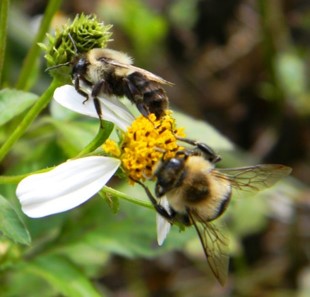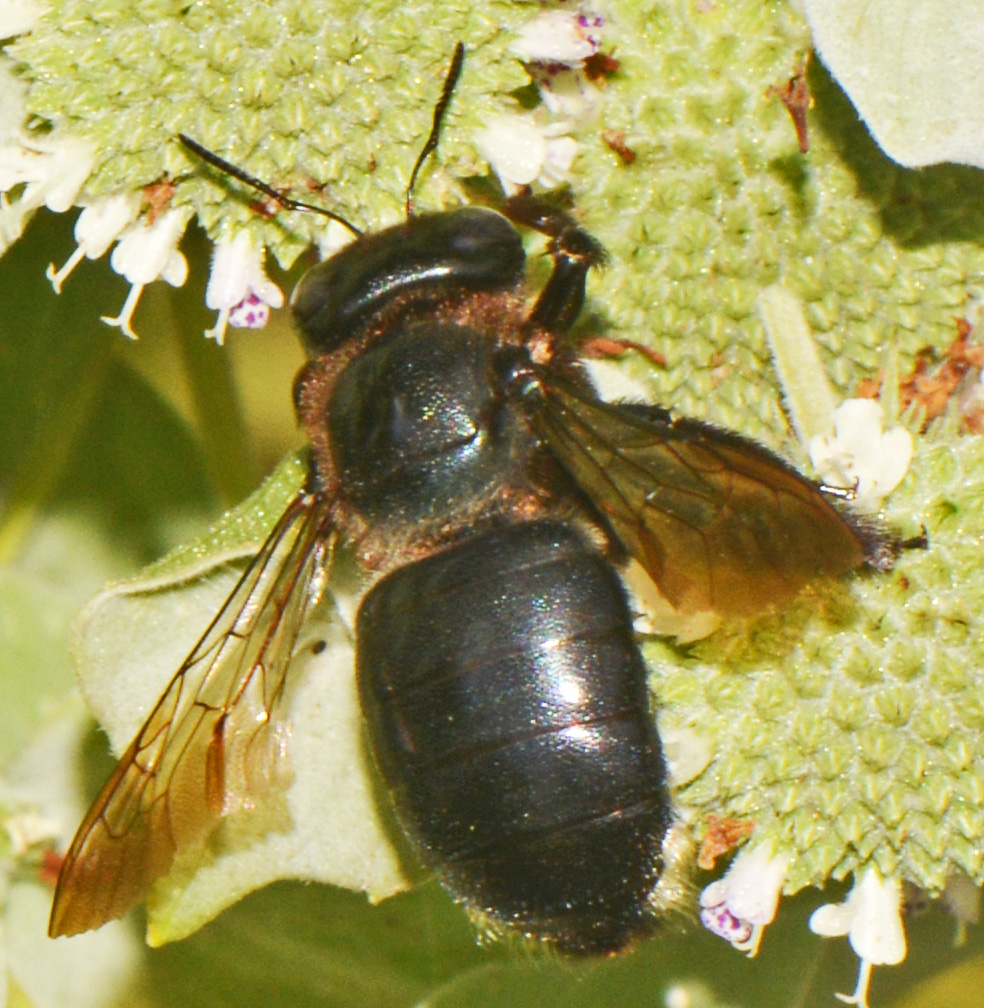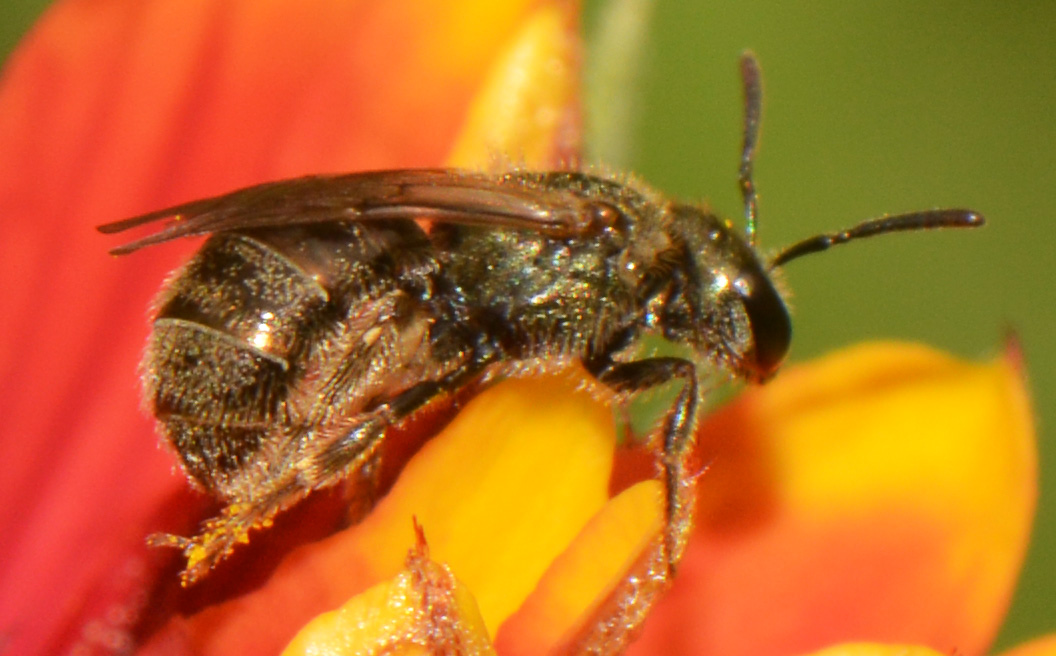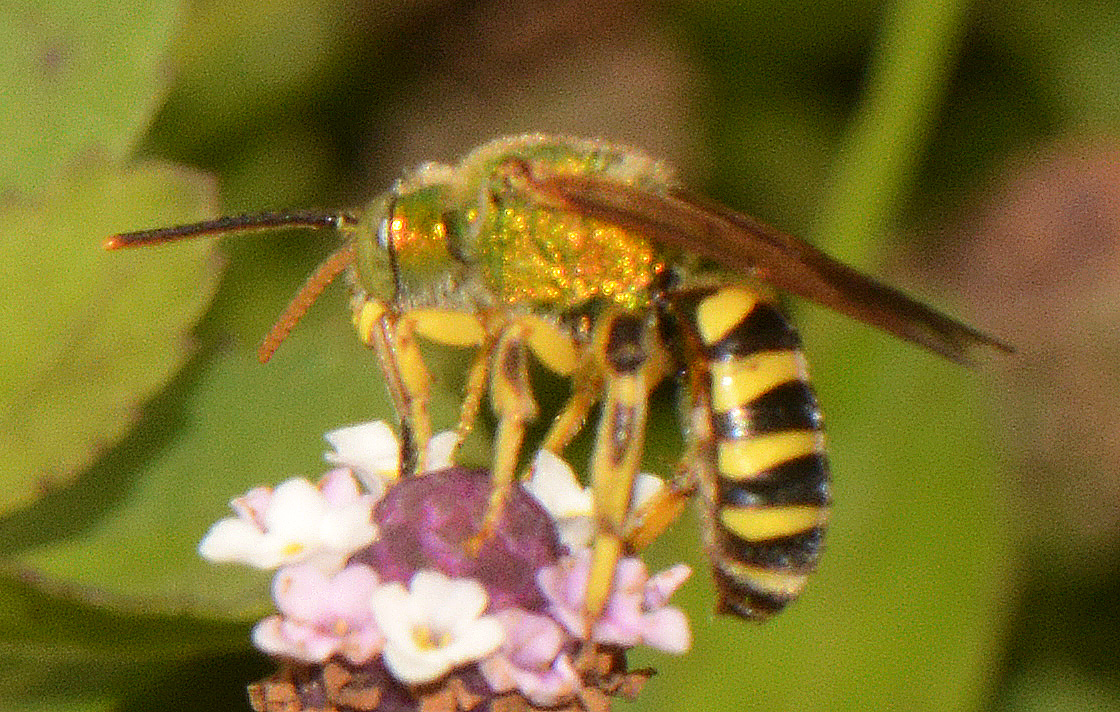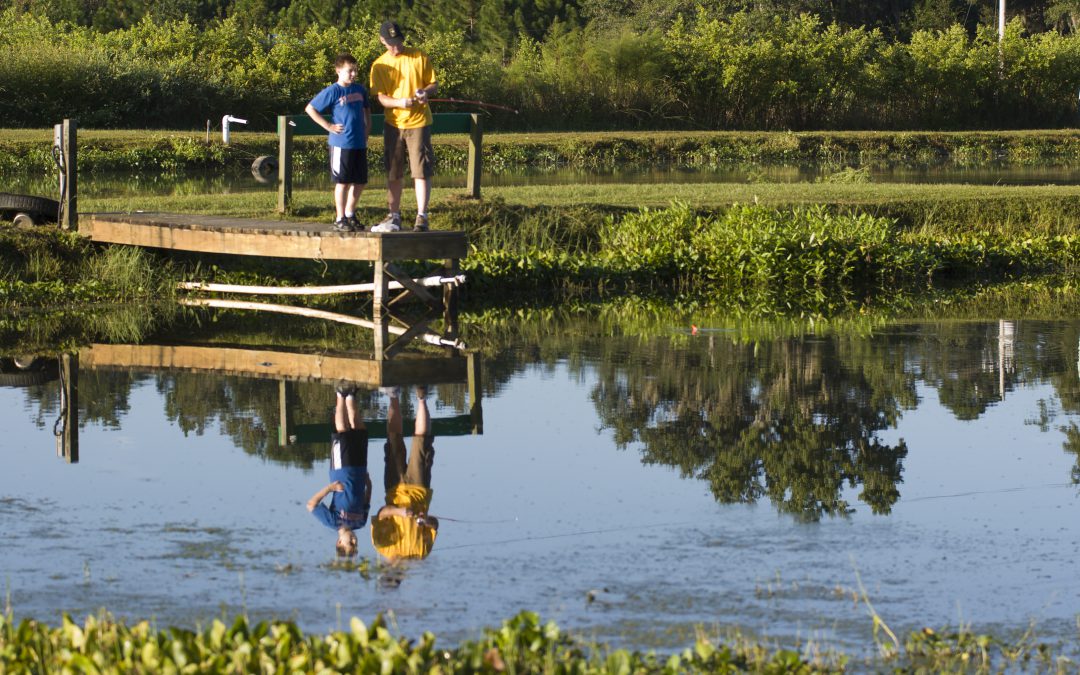
by Judy Biss | Nov 9, 2018
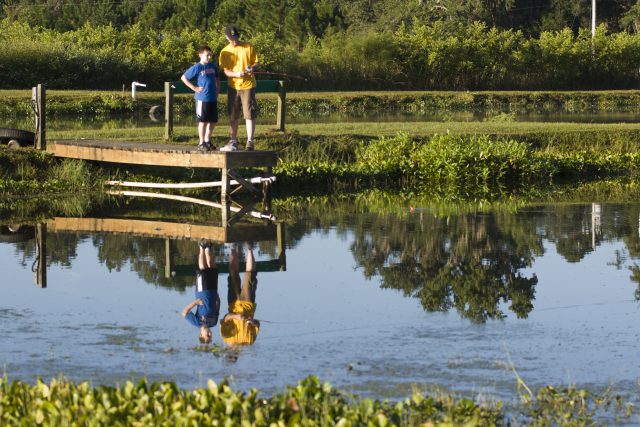
Farm ponds are used in a number of different ways, including fishing, irrigation, water control, and wildlife viewing. UF/IFAS Photo by Tyler Jones.
Farm ponds of all shapes and sizes are common in rural Northwest Florida. They are built for a number of reasons such as irrigation, water management, boating, fishing, wildlife viewing, livestock watering, and food production. Each of these uses guides the way the pond is managed to maintain its function, as well as its ecological beauty, but a factor that is important to all uses is having enough oxygen!
As you have probably observed, your pond is a dynamic system, which is influenced literally from the ground up! Much of the water’s basic chemical and physical characteristics reflect those of underlying soils (sand, clay, organic, etc.) and major sources of water (ground water, rainfall, runoff, etc.). The pond’s characteristics also influence how much oxygen is available for use by the plants and animals that live in it.
Why is Dissolved Oxygen and Aeration so Important?
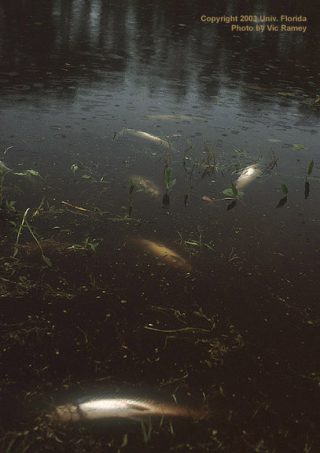
Fish kills are often the result of low dissolved oxygen levels and occur in both natural waters and man-made ponds. Photo by Vic Ramey.
The idea of oxygen being dissolved in water is a little counter-intuitive. Especially to us, as air-breathing humans! Think of your pond as a giant living, breathing organism. Its atmosphere is the water itself, and it contains dissolved oxygen gas for the fish, aquatic plants, insects, and zooplankton to “breathe.” Even bacteria need to breathe, and one of their fundamental roles in your pond is the decomposition of organic wastes like un-eaten fish food, and dead plant and animal materials.
Having enough dissolved oxygen in the water is one of the driving forces sustaining the health of your pond. Oxygen is dissolved into water directly from the atmosphere, wind and wave action, and by plant photosynthesis. Because warm water “holds” less dissolved oxygen than cold water, your pond’s dissolved oxygen levels can be lower in the summer than in the winter, especially in the early morning hours before plants begin to photosynthesize and produce oxygen. While longer days and warmer temperatures mean more sunlight for plants to photosynthesize and produce oxygen, the demand or need for oxygen by fish, bacteria, and other aquatic organisms is also increased. Periods of rainy, overcast days during the summer can greatly reduce oxygen production by plant photosynthesis. Combined that with the increased oxygen demand by other organisms, and dissolved oxygen levels can drop fast. These drops in dissolved oxygen levels often result in fish kills. Productive, nutrient-rich ponds with high levels of organic materials, and a high fish density are at a greater risk of the devastating effects of low dissolved oxygen levels.
What Can You Do to Insure Your Pond Has Enough Oxygen?
Do not be tempted to overfeed your fish. Feed them floating fish food so you can see how much they will consume in 10 to 15 minutes at each feeding. Consider feeding them every other day. In addition, as recommended in Managing Florida Ponds for Fishing “do not feed them when the water temperature is below 60° F, or, above 95° F. Fish do not actively feed at these times.” Use fish feeding behavior as your guide. Uneaten food will only add excess organic matter to the pond. The decomposition of this excess organic matter by bacteria increases the oxygen demand and likewise increases the chances of low oxygen levels and a fish kill.
Reduce nutrient inputs from runoff, livestock waste, excess fertilizer, and uneaten foods as described above, to help reduce the demand for oxygen in the system. Additionally, remove as much excess debris as possible that may have been blown into your pond as a result of October’s Hurricane Michael that affected much of Florida’s panhandle. Excess nutrients from these sources are freely available for use by hungry algae and other plants, which can then proliferate and, in turn, cause demand for more oxygen. This increased demand for oxygen can cause fish kills due to low oxygen levels as described above.
If you have an aerator, keep it operative especially during extended periods of cloudy and rainy weather. Watch your fish for signs of oxygen stress (not eating, remaining near and gulping at the surface) and aerate accordingly. Oxygen levels naturally fluctuate, and the lowest levels occur in the late evening through early morning hours when plants are not photosynthesizing and replenishing oxygen. Therefore, most important time to routinely operate the aerator is the late overnight hours into early morning.
If you don’t have an aerator, consider purchasing one, especially as your pond ages and grows more fish, plants, and algae. It is certainly less costly in the end to be proactive when it comes to maintaining adequate dissolved oxygen in your pond.
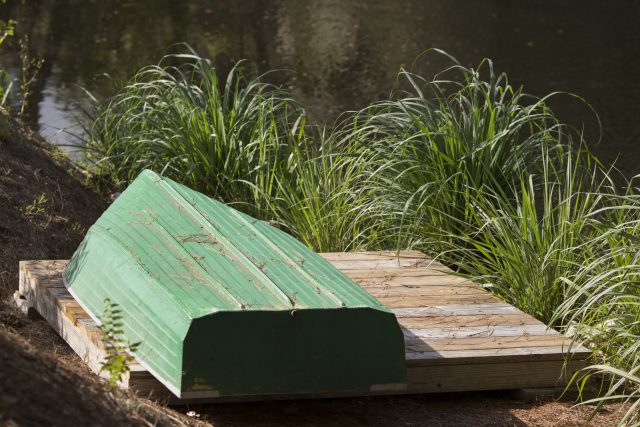
Recreation and fishing are important uses of many rural farm ponds. Photo by UF/IFAS Tyler Jones.
What kind of Aerator should I get?
There are a few basic aerator types. There are surface water agitators or fountains, and there are bottom air diffusers. They can be powered by electricity, wind, or solar power.
Diffuser aerators can help achieve a uniform oxygen distribution in your pond from top to bottom. This is especially important in deeper ponds (greater than 6-10 feet average depth) where temperature and oxygen stratification can occur. Diffuser aerators pump surface air through the base sitting on the bottom of the pond causing bubbles of air to rise to the surface. Diffusers also increase circulation and keep the deeper parts of your pond from becoming oxygen depleted. In a new pond, or one with flocculent sediments, a diffuser may cause turbidity due to the physical action of the diffuser base sitting on the pond bottom circulating oxygen from the bottom to the surface.
Other aerator options are the fountain sprays or surface agitators that aerate surface water. At a bare minimum, this can be a hose shooting water out over the water surface. Surface fountains and agitators work well in small shallow ponds, but are generally not recommended for larger more productive ponds that need more oxygen. In some commercial or farm ponds, paddle wheel agitators powered by a tractor’s pto are used during periods of low oxygen as an emergency measure when a fish kill is just beginning to occur.
Where Can I Purchase One?
The type or types of aerators you need for your pond will depend on the pond’s size, depth, level of productivity (nutrient level, number of fish), use, and water quality. There are a number of shopping options online for pond aerators. Try searching using the term “pond aerators Florida.” Also, some local Panhandle fingerling fish farms sell these products too. Here is a list of fish farms from the Florida Fish and Wildlife Conservation Commission: FWC Freshwater Fish Stocking List. Additionally, there are dissolved oxygen meters you can purchase which accurately read the amount of oxygen in your ponds. This is yet another tool to use in the overall management of your pond.
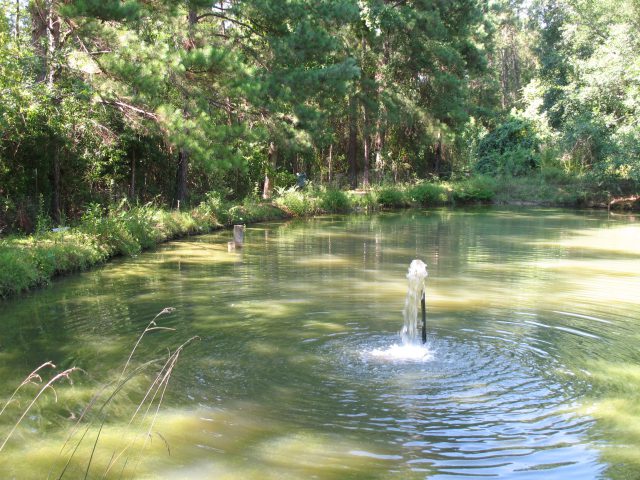
Simple surface agitators can be used to aerate small shallow ponds, but are generally not recommended for larger more productive ponds that need more oxygen. Photo by Judy Biss
More information about pond management can be found in the following references used for this article:
Overview of Florida Waters – Dissolved Oxygen
Clemson Cooperative Extension: Aeration, Circulation, and Fountains
Southern Regional Aquaculture Center: Pond Aeration
Managing Florida Ponds for Fishing
The Role of Aeration in Pond Management
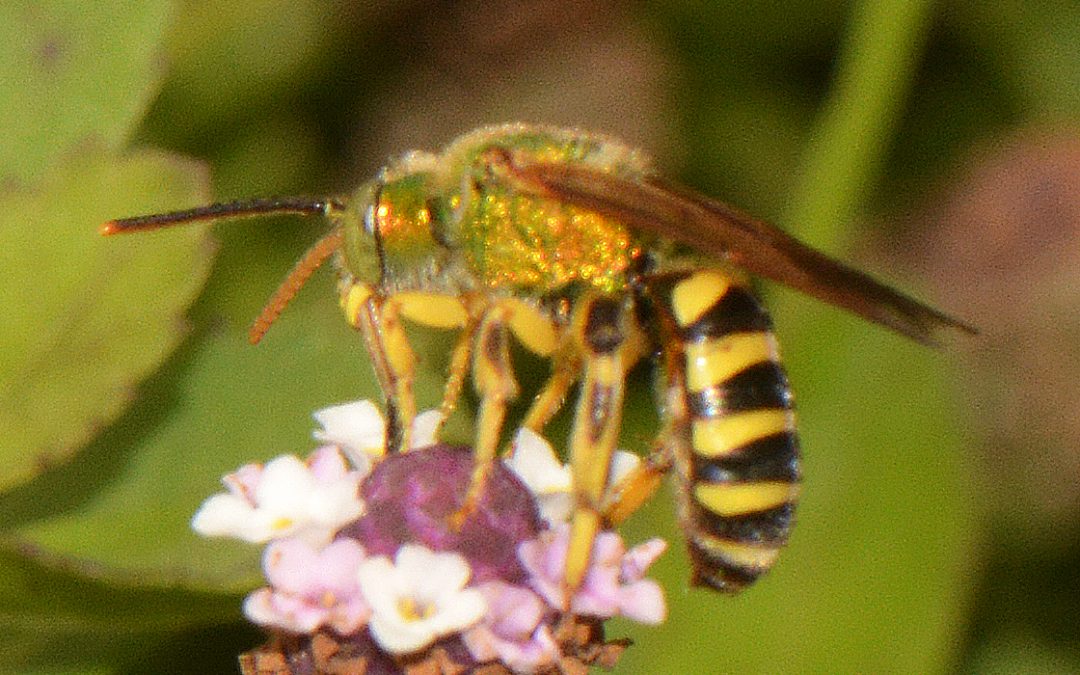
by Judy Biss | Sep 14, 2018
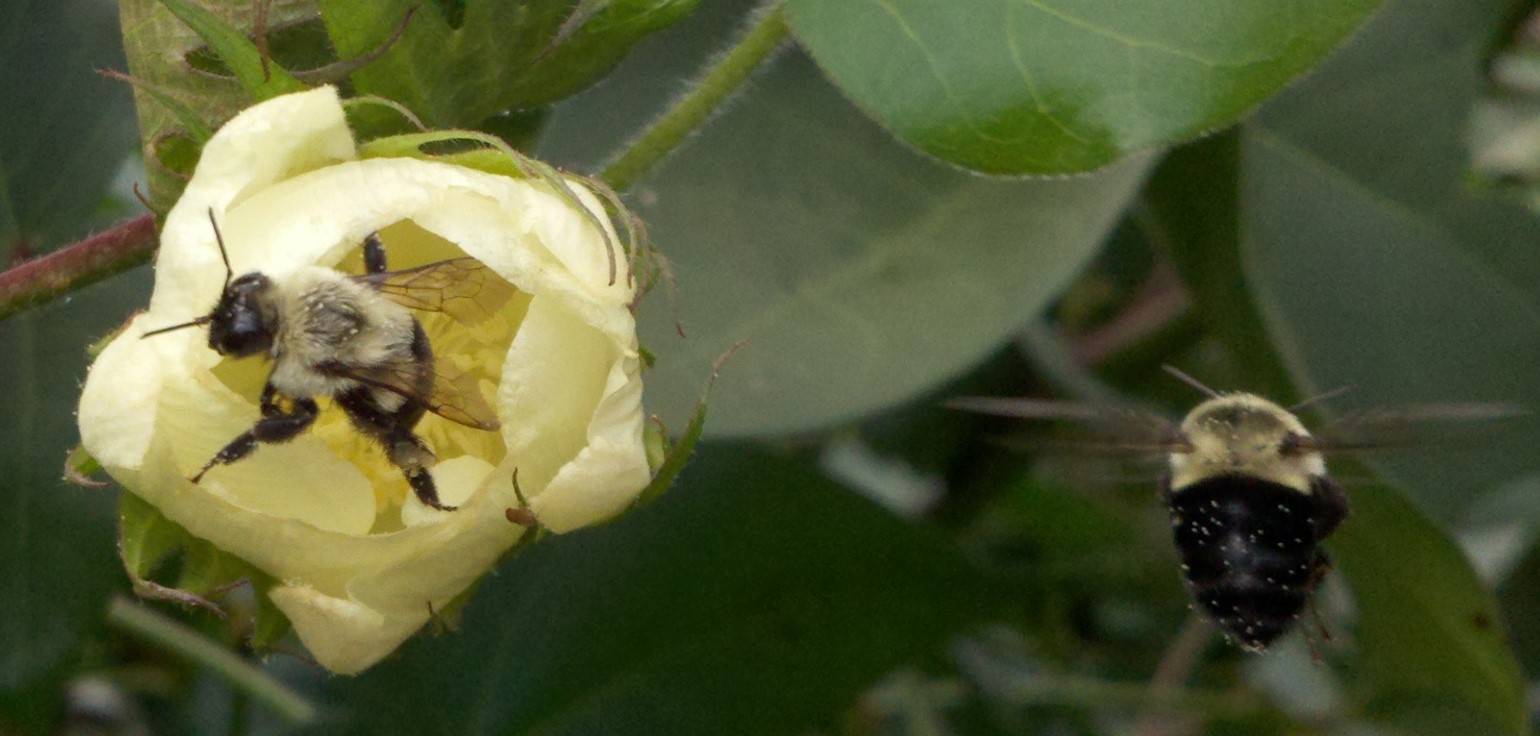
Bumble bees and other pollinators often visit the vast fields of cotton flowers in north Florida’s agricultural lands. Although cotton is mainly self-pollinating, pollination by bees can increase seed-set per cotton boll. Note the pollen grains stuck on each bee. Photo by Judy Biss
Beekeeping is thriving in Panhandle Florida and the importance of honeybee health and pollination is frequently in the news. As much as 1/3 of our food supply depends on the pollinating activities of honeybees, and because of this fact, pollinator protection was formally recognized at the federal level in 2014 when the President of the United States signed the memorandum called: Creating a Federal Strategy to Promote the Health of Honey Bees and Other Pollinators.
The goals of this policy are to increase and improve pollinator habitat for not only managed European honeybee colonies, but also native bees, birds, bats, and butterflies – all of which are vital to our nation’s economy, food production, and environmental health.
So, of the variety of pollinating insects and animals, what are some of Florida’s native pollinating bees? What do they look like and what are their characteristics? Let’s take a look at a few. Follow the links provided for additional, fascinating details. I will start with one of my favorites, because it happens to pollinate one of my favorite fruits. Blueberries!
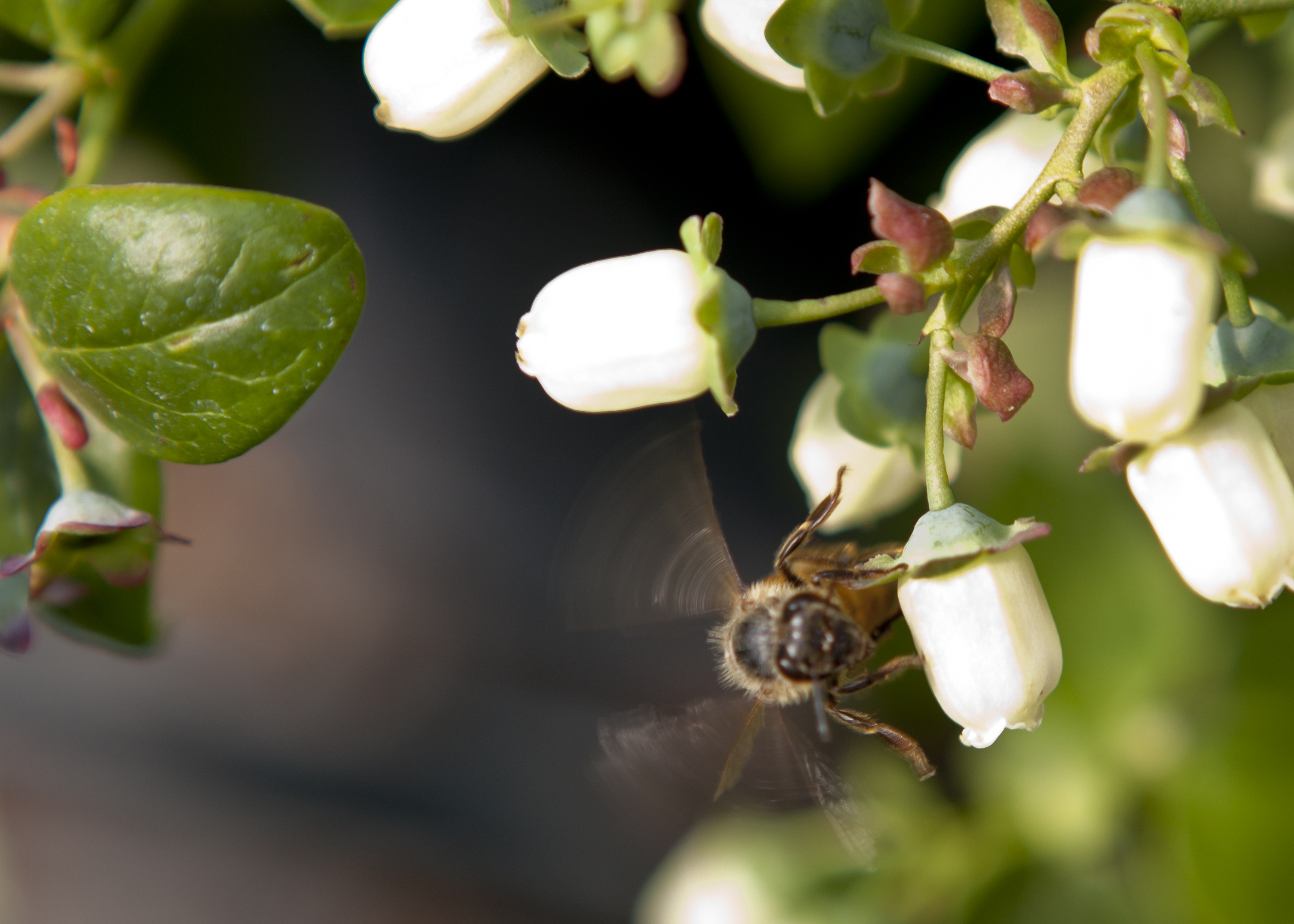
The Southeastern blueberry bee uses buzz pollination on a blueberry plant. Photo credit: UF/IFAS Photo by Tyler Jones.
While managed honeybees can pollinate blueberries, the Southeastern blueberry bee, as well as bumblebees, are much more efficient pollinators of this crop. These bees “sonicate” the flowers to release more pollen. Sonication, or buzz pollination is caused by the bee’s high-speed wing beats vibrating the flower causing pollen to fall onto the bee. As we will see with many of our native bees, the Southeastern Blueberry bee is a solitary bee meaning it does not live in colonies like the European honeybee. The Southeastern Blueberry bee digs burrows in the ground where they lay eggs that hatch the following year to start the cycle over again.

Male blue orchard bee. Males have long antennae. Credit: Kevin Hall, BugGuide.net
Blue orchard bees are native to the United States and Canada, and are important pollinators of a variety of fruits including blueberries. They are solitary bees most active in the early spring and summer. They are part of a group of bees called mason bees that use holes or tube-like structures to nest in. Some garden supply stores now carry native bee nesting cavities such as stacks of bamboo or blocks of wood with holes of varying sizes that you can use to attract these native pollinators to your backyard.
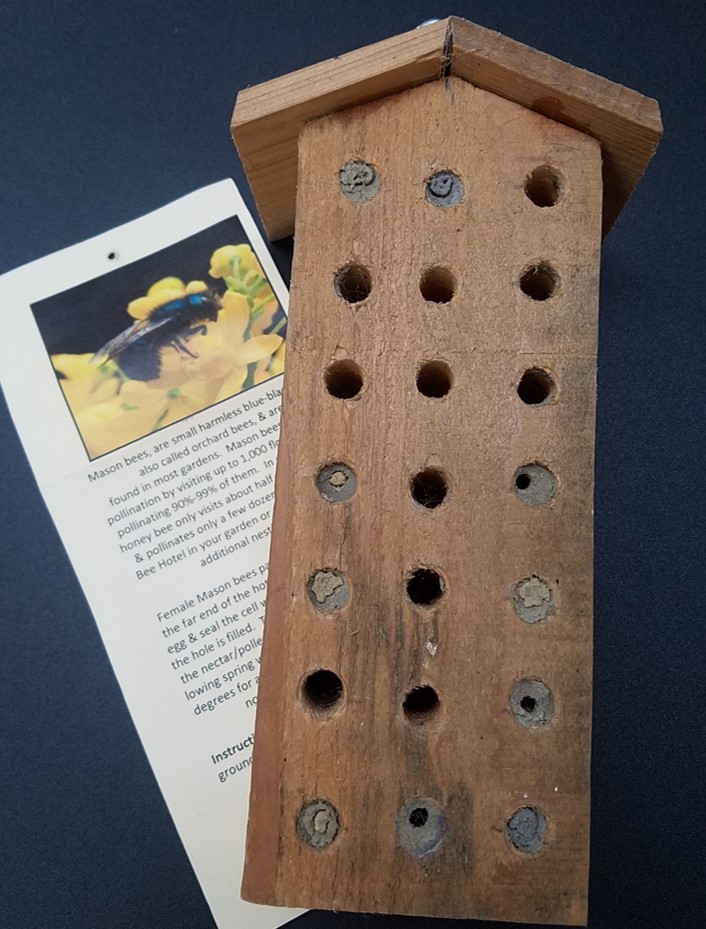
Many native pollinating bees, such as the mason bees, are solitary in nature and can be attracted to your backyard by providing nesting habitat. Bee nesting “houses,” such as this block of wood with pre-drilled holes, are available for sale more frequently now in garden supply stores. Note the cavities that were used indicated by the mud-like plugs. Photo by Judy Biss

Nesting area of the miner bee, Anthophora abrupta Say. Photograph by Jason Graham, University of Florida.
A few years ago, our office received a call about a number of bees flying around a large pile of fill dirt in one of our local parks. It turned out to be the nesting site of these fascinating bees. These bees are solitary, yet gregarious. Solitary in that the female builds her own burrow in the ground in which to lay her egg; gregarious in that they tend to congregate together to build their individual burrows. They are pollinators of a number of plants, including fruits and vegetables.
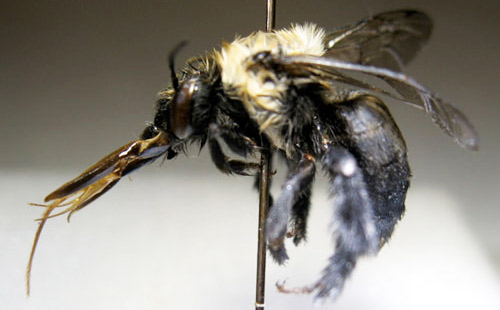
Adult female Anthophora abrupta Say, a miner bee. Photograph by Katie Buckley, University of Florida.
Bumble bees are among the most recognizable of insects. They are large, colorful, and a wonder to watch. They are also important pollinators of both native plants and agricultural crops. Bumble bees are so effective at pollinating important food crops, they are raised commercially and sold to pollinate produce such as tomatoes, peppers, cranberries, and strawberries. Blueberries and other commercially important food crops benefit from the bumblebees’ ability to “sonicate,” or “buzz pollinate,” as described above. They are social bees forming small colonies (50 – 500 individuals) in the ground or empty cavities, which only last one season.
Leafcutting bees are a group of important native pollinators found throughout the world, including North America. In Florida, there are approximately 63 different species of leafcutting bees, one of which is Osmia lignaria listed above (Blue Orchard Bee). As the name implies, these solitary bees cut neat circles from broadleaf deciduous plants which they use to build their long tubular nests. While their leaf cutting capabilities can sometimes decrease the esthetics of some common landscape plants, their actions will not harm the plants. They are pollinators of wildflowers and many of our fruits and vegetables.

Typical leaf damage caused by leafcutting bees, Megachile spp. The bees use the leaf pieces to construct nests. Photograph by L.J. Buss, University of Florida.
Sweat bees are important pollinators for many wildflowers and fruits and vegetables, including peaches, plums, apples, pears, alfalfa and sunflower. This family of bees (Halictidae) contains one of the largest genera of bees in the world, displaying a wide range of social, nesting, physical, and foraging characteristics. In Florida, there are 44 species of sweat bees.
So, the next time you are walking in the garden, or hiking in Florida’s beautiful woodlands and pastures, slow down to catch of glimpse of these busy and critically important insect pollinators. I for one am quite grateful for those bees that help produce an abundance of food… especially blueberries!
For more information, check out the following resources:
Calhoun County Florida Wasps and Flies
Love Blueberries? Thank the Blueberry Bee!
USDA Forest Service publication: “Bee Basics—An Introduction to our Native Bees,”
UF/IFAS Entomology and FDACS Featured Creatures
The Bumble Bee – One of Florida’s Vital Pollinators
Blue Orchard Bee, Osmia lignaria Say (Insecta: Hymenoptera: Megachilidae)

by Judy Biss | Mar 18, 2018

Adult grass carp, Ctenopharyngodon idella Val. Credit: Jeffrey E. Hill, University of Florida
Spring is only days away. Everywhere you look, plants of all kinds are awakening to recent rains, longer days, and fertile soils; and this includes aquatic plants as well! Florida has hundreds of aquatic plant species, and they are an often-overlooked feature of Florida’s landscape. Overlooked that is, until the growth of non-native (or even some native) species interferes with use of our waters. Some aquatic plant species can become problematic in Florida waters as their growth interferes with fishing, flood control, navigation, recreation, livestock watering, or irrigation. For these reasons, being knowledgeable about properly managing aquatic plants is important to the many uses of Florida’s waters, whether it be a state managed public waterbody, or your own backyard farm pond.
Any pest, whether plant, animal, or insect, is best managed using “IPM” or Integrated Pest Management. IPM involves using a variety of available management “tools” to control pests in an economically and environmentally sound manner. As in any IPM effort, the first thing to do is identify what is causing the problem. Next, define what your management goals are. Then, research what tools are available for you to manage the problem. And finally, devise and implement your management plan.
In this article, we will look at one of the IPM “tools” used to manage aquatic plants – the grass carp (Ctenopharyngodon idella Val.). The use of grass carp to manage problematic levels of aquatic plants falls under the general management term of “biological control.” Biological control essentially uses one living organism to control another living organism. Grass carp have become one of the most widely recognized examples of biological control.
The Grass Carp
As the name implies, the grass carp is an herbivorous fish that eats plants. It is native to eastern Russia and China living in large muddy rivers and associated lakes, and is actually one of the largest members of the minnow family. According to the Florida Fish and Wildlife Conservation Commission the largest triploid grass carp taken in Florida was 15 years old, 56″ long and weighed 75 pounds! The grass carp has been introduced into more than 50 countries and is used as a food item in many places around the world. They are used in nearly all states of the USA to manage aquatic plants.
Introduction into the United States:
“The grass carp was considered for introduction into the U.S. primarily because of its plant-eating diet, which was thought to have great potential for the control of aquatic weeds. In 1963 the U.S. Bureau of Sport Fisheries and Wildlife Fish Farming Experiment Station, Stuttgart, Arkansas, in cooperation with Auburn University, imported grass carp for experimental purposes; in 1970, this fish was introduced into Florida primarily for researchers to study its ability to control hydrilla.” (Grass Carp: A Fish for Biological Management of Hydrilla and Other Aquatic Weeds in Florida). “Early release of diploid fish led to reproductive populations in several US drainage systems, including the Mississippi River and major tributaries” (Grass Carp, the White Amur: Ctenopharyngodon idella Cuvier and Valenciennes (Actinopterygii: Cyprinidae: Squaliobarbinae))
Development of the Sterile Triploid
According to the UF/IFAS publication, Grass Carp, the White Amur: Ctenopharyngodon idella Cuvier and Valenciennes (Actinopterygii: Cyprinidae: Squaliobarbinae), “Use of the fish was limited from 1970 until 1984 due to tight regulations surrounding concerns of escape and reproduction, and the potential impacts that colonization of the fish could have on native flora and fauna. These concerns led to research that developed a non-reproductive fish, which was equally effective in controlling hydrilla.” This non-reproductive fish is known as the triploid grass carp. Through a process of subjecting fertilized grass carp eggs to heat, cold, or pressure, the resulting fish have an extra set of chromosomes rendering the fish sterile. Triploid carp have the same herbivorous characteristics as the normal diploid carp, but they are unable to spawn and reproduce. Their inability to reproduce is what makes them a viable tool to manage aquatic plants, and that is because their numbers and feeding pressure can be controlled, they cannot overpopulate a waterbody, nor if they escape, will they overpopulate un-managed areas.
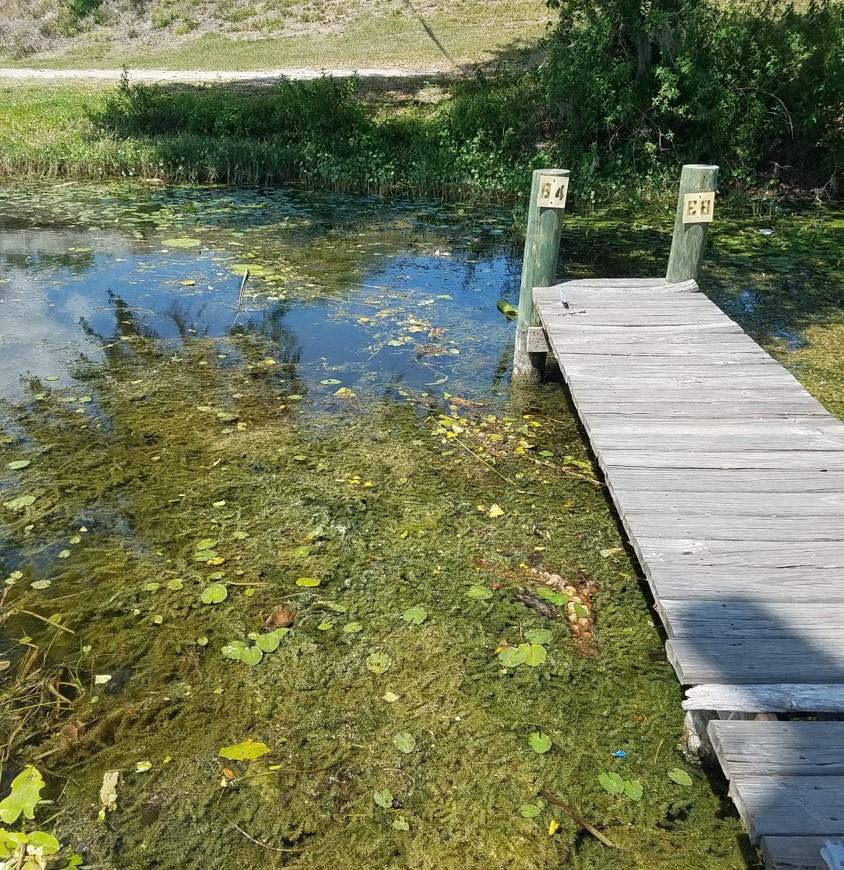
The growth of invasive non-native (or even some native) aquatic plant species can interfere with the many uses of Florida’s waters. This is invasive hydrilla mixed with water lilies in a Florida lake. Photo by Judy Biss
What kinds of aquatic plants do they eat?
The grass carp grazes on many types of aquatic plants, but it does have its preferences. Its most preferred aquatics plants are hydrilla, chara (musk grass), pondweed, southern naiad, and Brazilian elodea. Its least favorite aquatic plants are species such as water lily, sedges, cattails, and filamentous algae. It will, however, graze on many types of plants even shoreline or overhanging vegetation in the absence of its preferred foods. Another reason the grass carp is an effective plant management tool is because it eats many times its body weight in plant material. As stated in Grass Carp, the White Amur: Ctenopharyngodon idella Cuvier and Valenciennes (Actinopterygii: Cyprinidae: Squaliobarbinae), “every 1 lb. increase in fish weight requires 5–6 lbs. of dry hydrilla (Sutton et al. 2012), which—considering hydrilla is 95% water—is a great deal of live plant material.”
Use of Grass Carp as a Biological Control:
Integrating the use of grass carp in aquatic plant management plans is usually cost effective. In many cases involving the use of grass carp, overabundant aquatic weed infestations are first treated with an aquatic herbicide to reduce biomass. The carp are then stocked to control regrowth and to extend the time between herbicide treatments. This can be up to 5 or more years, depending on the situation. One factor in long term control is the survival of the stocked grass carp. They are not without predators as largemouth bass, otters, birds, etc. readily prey on small grass carp. Stocked fish should be at least 12 inches long to help avoid predation and provide plant control. Other considerations to factor into your management plans are the long term, yet non-specific, control that grass carp can provide. If not stocked in the correct manner, they may end up eating aquatic plants that you wish to maintain. Also, if they eat all the aquatic plants, your once clear water may become dominated by algae instead.
How can I get grass carp for my lake or pond?
The Florida Fish and Wildlife Conservation Commission (FWC) administers the Grass Carp program for Florida. A permit is required before you can purchase carp, and only the sterile triploid carp are permitted for use in Florida. The FWC can answer many questions about the use of grass carp and if this aquatic plant management “tool” is the right one for you to use in your particular situation. In north Florida, the regional FWC office is located at 3911 Highway 2321 Panama City, FL 32409, Phone: 850-767-3638.
What do I need to know about triploid grass carp?
Cost: Triploid grass carp cost between $5 and $15 each and are usually stocked at three to ten fish per acre, resulting in costs as low as $15 per acre. In comparison, herbicides cost between $100 and $500 per acre and mechanical control may cost more than twice that.
Time: Grass carp usually take six months to a year to be effective in reducing problem vegetation, although they provide much longer term control than other methods, often up to five years before restocking is necessary. When used in conjunction with an initial herbicide treatment, control of problem vegetation can be achieved quickly, and fewer carp are required to maintain the desired level of vegetation.
Overstocking: Once stocked in a lake or pond, carp are very difficult to remove. If overstocking occurs, it may be ten years or more before the vegetation community recovers. Even after carp are removed, other herbivores such as turtles may prevent the regrowth of vegetation.
Water Clarity: Aquatic plants remove nutrients in the water. When plants are removed, nutrients may then be utilized by phytoplankton, turning the water green. Clarity may be improved by reducing or eliminating sources of nutrients into the lake such as road runoff and lawn fertilizer.
Inflows/Outflows: It is in the best interest of people stocking carp to keep them in the desired lake or pond. It is also a required condition of the permit. Any inflows or outflows through which carp could escape into other waters require barriers to prevent fish from escaping into waters not permitted.
For more information on this topic, please see the following resources used for this article:
Aquatic and Wetland Plants in Florida
Plant Management in Florida Waters
Grass Carp, the White Amur: Ctenopharyngodon idella Cuvier and Valenciennes (Actinopterygii: Cyprinidae: Squaliobarbinae),
Grass Carp: A Fish for Biological Management of Hydrilla and Other Aquatic Weeds in Florida).
Chinese Grass Carp
FWC Triploid Grass Carp Permit
UF/IFAS Center for Aquatic and Invasive Plants – Aquatic Plant Control Methods
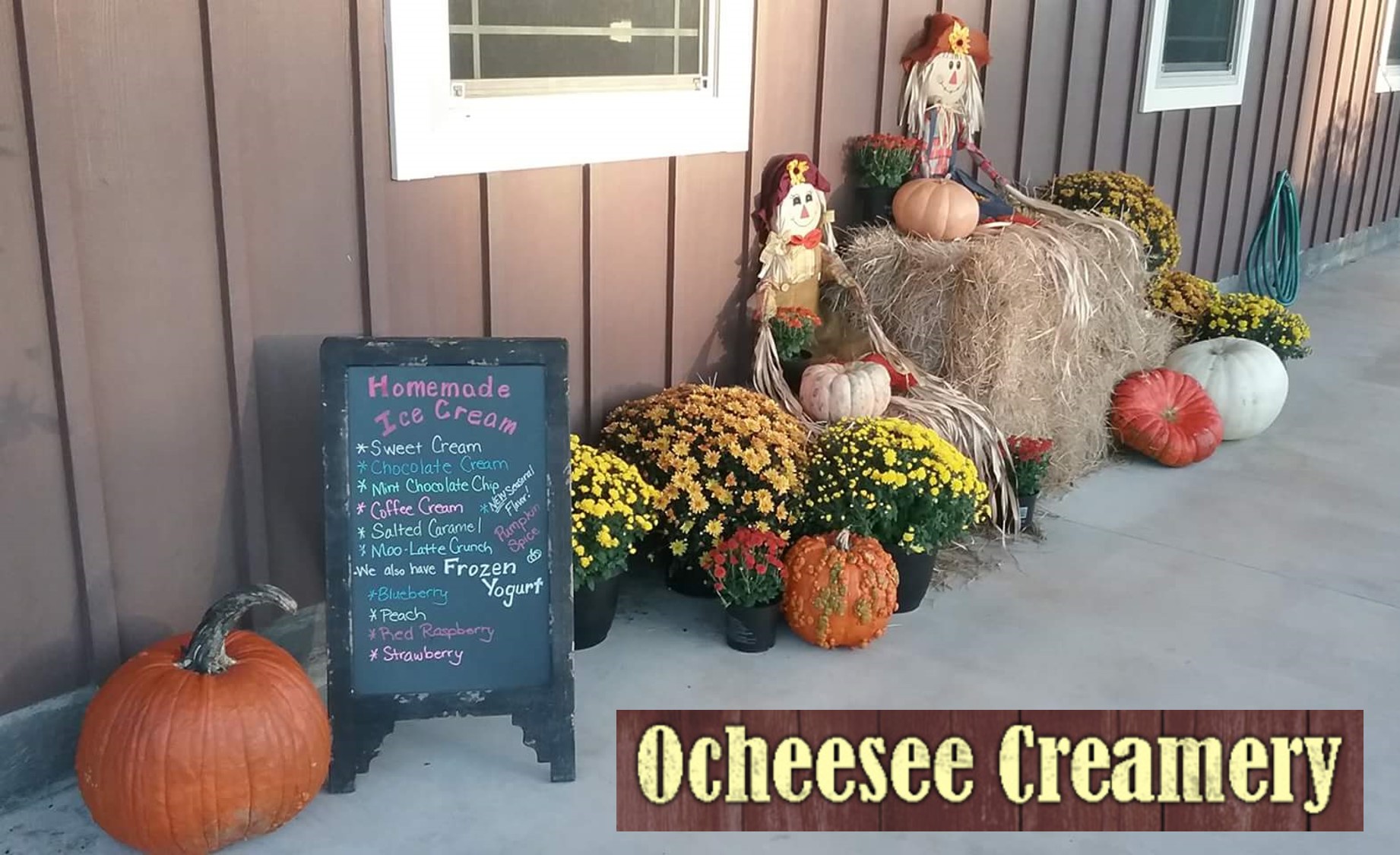
by Judy Biss | Nov 20, 2017

The Ocheesee Creamery in Calhoun County Florida participates in the annual regional Farm Tour highlighting a number of agritourism opportunities in North Florida. Photo Credit: Ocheesee Creamery
It seems each weekend this time of year is packed with things to do outside; and for good reason! The weather is perfect and the holidays are approaching. Among the many festivals and festivities are a number of farm tours, or “agritourism” related events. For example, there was the recent Tallahassee and surrounding area “10th Annual Farm Tour: “Farms, Gardens and Ranches,” and Jackson County just hosted the annual “Antique Tractor Drive” as part of its Farm City Festival.
The Merriam Webster definition of “Agritourism” is “the practice of touring agricultural areas to see farms and often to participate in farm activities.” More specifically, pursuant to Florida Statute 570.961 the definition of agritourism in Florida is “any agricultural related activity consistent with a bona fide farm or ranch or in a working forest which allows members of the general public to view or enjoy activities related to farming, ranching, historical, cultural or harvest-your-own attractions for recreational, entertainment or educational purposes.”
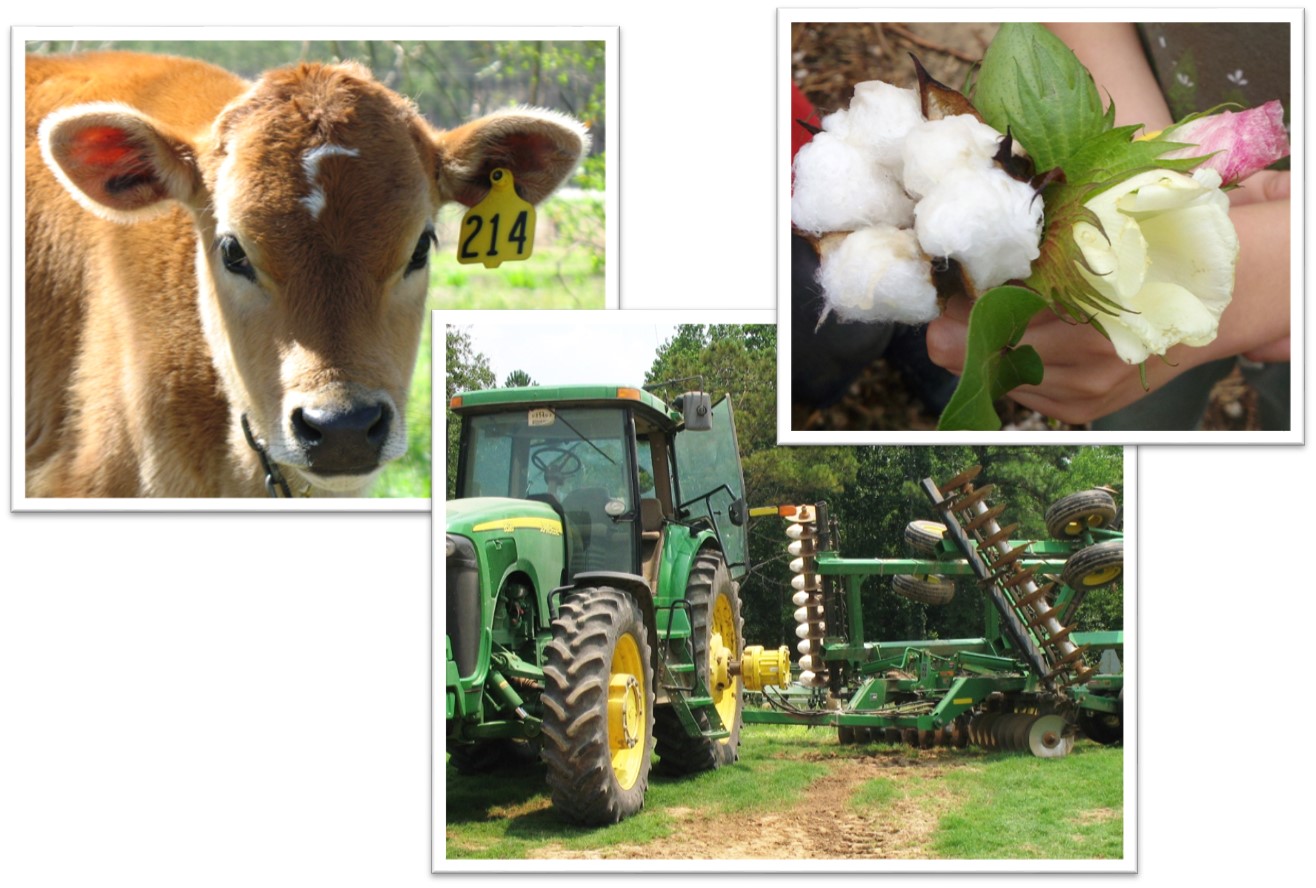
North Florida is home to a rich agricultural industry. Photo Credit Judy Biss
Panhandle Florida is an agriculturally diverse region growing everything from row crops like cotton, corn, soybeans, and peanuts to hay, timber, beef cattle, dairy cattle, fruit, vegetables, and even shellfish along the coast. Many farms are beginning to offer agritourism related opportunities as a means to increase income, but also to increase awareness of the importance of agriculture, in its many diverse ways, to our lives.
Many farms and ranches also have large tracts of land that are left uncultivated and serve as natural areas for surrounding fish and wildlife. Because of this, many farms are not only prime candidates for agritourism, but “ecotourism” as well. In addition to our numerous national forests and state parks many private landowners also have the potential to market their natural areas through ecotourism. This, also, is a relatively new industry in Florida, and more can be read about it here: Ecotourism
“Growing agritourism in Florida is a terrific way of marrying two of our oldest industries: tourism and agriculture,” said Commissioner of Agriculture Adam H. Putnam. “The growth and success of agritourism in Florida is not only good for our economy, it also celebrates the people, families and businesses that make up Florida agriculture.” (Jul 27, 2016, Commissioner Adam Putnam and VISIT FLORIDA Promote Florida Agritourism, Press release)
For more information on this topic, please see the following UF/IFAS Publications and related websites.
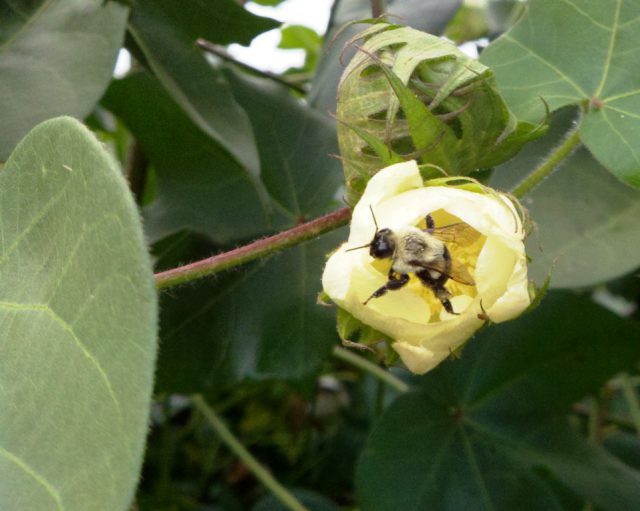
by Judy Biss | Sep 22, 2017

Cotton is largely self-pollinating but attractive to bees. Pollination by bees can increase seed set per boll. Photo by Judy Biss
“The happiness of the bee and the dolphin is to exist.
For man it is to know that and to wonder at it.”
Jacques Yves Cousteau
Bumble bees are among the most recognizable types of insects. They are large, colorful, and a wonder to watch. They’re also popularized in media, cartoons, and clip-art images, but beyond the popular images, bumble bees are worthy of our attention as important pollinators of both native plants and agricultural crops. They are one of hundreds of pollinating bees that are critical to the abundance of our native lands, wildlife, and also our food supply. Protection of pollinators has received national recognition and many programs are now geared towards pollinator conservation.
Why is Pollinator Protection Important?
According to the UF/IFAS publication Minimizing Honey Bee Exposure to Pesticides:
The western honey bee is conceivably the most important pollinator in Florida and American agricultural landscapes. The honey bee is credited with approximately 85% of the pollinating activity necessary to supply about one-quarter to one-third of the nation’s food supply. Over 50 major crops in the United States and at least 13 in Florida either depend on honey bees for pollination or produce more abundantly when honey bees are plentiful.
And:
“Growers also use other managed bees species, such as the bumble bee to provide field and greenhouse crop pollination services. Additionally, there are more than 315 species of wild/unmanaged bees in Florida that play a role in the pollination of agricultural crops and natural and managed landscapes. These include mining bees, mason bees, sweat bees, leafcutter bees, feral honey bees, and carpenter bees, among others.”
Pollinator Protection was formally recognized at the federal level in 2014 when the President of the United States signed an official memorandum entitled: Creating a Federal Strategy to Promote the Health of Honey Bees and Other Pollinators which outlines specific steps to increase and improve pollinator habitat. These steps are geared towards protecting and restoring populations of not only honey bees, but native bees, birds, bats, and butterflies; all of which are vital to our nation’s economy, food production, and environmental health.
Bumble Bee Biology and Ecology
There is much to learn about these fascinating insects. Here are some facts to feed your curiosity. Additional resources are listed at the end of this article.
- Bumble bees belong to the genus Bombus within the family Apidae. As such, they are related to honey bees, carpenter bees, cuckoo bees, digger bees, stingless bees, and orchid bees.
- There are about 50 species of North American bumble bees.
- Bumble bees are social and form colonies like honey bees do, but bumble bee colonies are smaller (50 – 500 individuals) and their colonies only last one season.
- Bumble bees generally make their nests in the ground using abandoned rodent cavities or under old tree roots, etc.
- Each spring, a mated queen emerges from winter hibernation and finds a suitable underground cavity. She begins collecting nectar and pollen and laying eggs to build her colony.
- By late summer and into fall, the only surviving member of the colony are new queens.
- These queens mate and then they hibernate during winter 2-5 inches deep in the soil. The following spring these queens emerge and start new colonies, repeating the annual cycle.
- Bumble bees are adapted to a wide range of environmental conditions and can forage in cooler, cloudier, and wetter weather better than other bees. Because of this adaptation, they are generally the first bees out in early spring and the last bees out in the fall.
- Since bumble bees are adapted to a wide range of environmental conditions, they are also able to feed on a wide variety of flowering plants.
- Bumble bees do make honey, but only enough to feed the colony during bad weather when they are unable to go out and forage.
- Bumble bees, like the blueberry bee collect pollen from certain flowers using a unique behavior called “buzz pollination,” or “sonication.” This behavior is not found in European honey bees. Some plants, blueberries for example, hold tightly to their tiny pollen. Bumble bees and blueberry bees grab the flower structure and powerfully vibrate their wings while holding onto the flower. Their whole body vibrates and literally shakes the pollen lose from the flower.
- Besides blueberries, other commercially important food crops that benefit from “buzz pollination” include, tomatoes, peppers, and cranberries.
- Bumble bees are so effective at pollinating important food crops that they are raised commercially and sold to greenhouses to pollinate produce such as tomatoes, peppers, and strawberries.
Create Your Own Pollinator Pasture
You can help increase the abundance and health of bumble bees, other native pollinators, and honey bees by creating nectar and pollen rich bee pastures. These pastures can be filled with annual plants, which grow from seed each year, perennial plants, which return and spread on their own each year, various flowering shrubs and trees, or any mixture of above. You can also manage existing natural areas and woodlands by employing recommended prescribed fire regimes, non-native invasive plant control, and other practices to encourage a diversity of native pollinator plants.
The ideal bee pasture is one in which flowers are blooming as continuously as possible throughout the year. Research shows bees thrive best in open sunny pastures that are as large as possible, with a diversity of plants types. While flowering shrubs along woodland edges are well used by bees, a bee pasture that is allowed to become dominated by trees and shade will become less attractive to bees. A dedicated, open, sunny pasture having nectar and pollen plant diversity is best. Just as with any field you intend to plant, the first step is to collect a soil sample for analysis of existing nutrients and pH levels. (For more information on soil samples read the article Soil Test First!
Pollinator Plant Types
There are many plants that provide nutritious nectar and pollen for north Florida’s pollinators. Some examples of plants which are good pollinator food sources are maple trees, redbuds, poplars, gallberries, blackberries, palmettos, partridge pea, mint, thistles, goldenrod, asters, tickseeds, sunflowers, squash, melons, and clovers. If you purchase a bee pasture blend from a seed company, make sure it is suited for growing in north Florida and does not contain noxious, invasive, weedy plant species. The Florida Exotic Pest Plant Council maintains a listing of documented invasive plants here: List of Invasive Plant Species.
Summary and Resources
The business, biology, and botany of pollination is fascinating and critical to sustainable and diverse food production in Florida and the United States. Bumble bees are just one of the many native pollinators that frequent our forests, fields, and gardens. Consider turning your fallow lands or backyards into productive bee pasture and reap a sweet harvest.
For more information please see the resources used for this article below:













